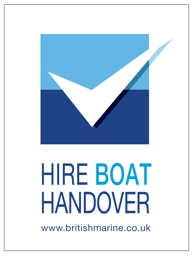Mooring
Mooring
- Slow down
Assess where you can moor safely - Moor on the towpath
Only moor on the towpath side of the canal. - Please do not moor at a water point
You may be woken very early by an angry boater needing to fill up with water - Please do not moor at the waiting stage for locks or movable bridges
Angry boaters trying to navigate locks or bridges will not thank you for blocking waiting stages - Think twice before mooring on a bend. Carefully assess whether you may be causing an obstruction - especially if two other boats meet where you're moored and want to pass.
- Keep mooring ropes, or any other obstruction, clear of the towpath
Mooring ropes and mooring pins may be obvious to you in the daylight, but at night they are invisible to towpath users. Keep well clear of the towpath, and if in any doubt, tie a white carrier bag around the mooring pin to reflect any night light and alert towpath walkers who may (especially after an evening in a local hostelry) veer slightly off the path, and into your mooring rope. - Not too tight
Mooring ropes need not bind your boat to the edge - leave some slack as the water level may rise - or fall, leaving you hanging from the mooring ropes! - Only hang fenders from the side once you're moored and remove them before setting off again. Low branches may grab the fender rope and although not expensive, fenders are better on boats than hanging from trees!
- Use all three ropes on tidal rivers
If you have to moor on a tidal river (and generally it's best not to do so if at all avoided), use all three ropes to moor. Also ensure, if you are using mooring pins, that they are driven securely into firm ground - don't worry about getting them out again, you'll find they're very loose in the morning!
 Sheffield Narrowboats
Sheffield Narrowboats

